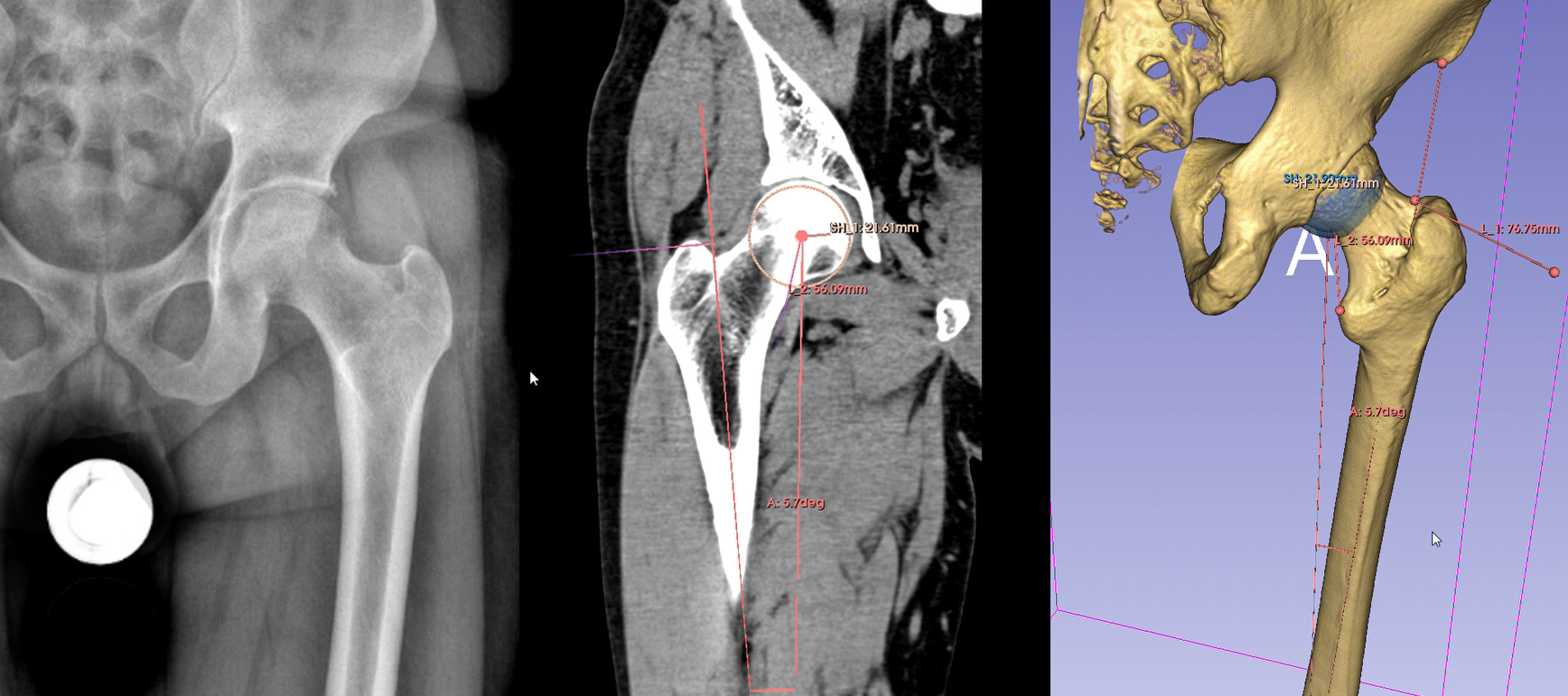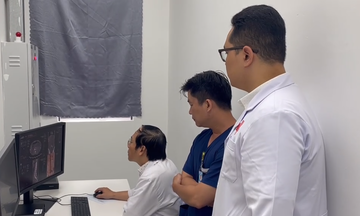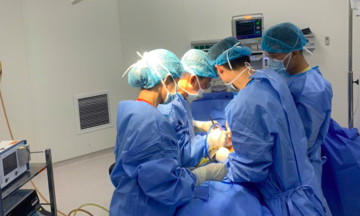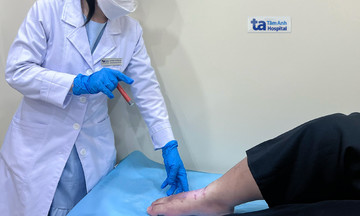X-rays revealed stage 4 avascular necrosis in Thanh’s left femoral head and early-stage necrosis in his right. Dr. Che Dinh Nghia, Deputy Head of the Department of Trauma and Orthopedics at Tam Anh General Hospital in Hanoi, recommended a left hip replacement and conservative treatment for the right hip.
Using a Somatom Force VB30 CT scanner, Dr. Nghia obtained data to create a 3D model of Thanh’s pelvis, hip joints, and femurs. This allowed him to meticulously plan the surgery, selecting the optimal prosthetic components and determining precise bone resection levels, offset, inclination, and implant positioning.
According to Dr. Nghia, about 60% of hip replacement plans based on 2D X-rays require adjustments during surgery due to inaccuracies in two-dimensional measurements. Surgeons often rely on experience to correctly position the prosthetic components. "With 3D surgical planning, we can restore the original anatomy before the femoral head was damaged," he explained.
 |
Surgical planning using X-rays (left) and 3D technology (middle, right). Photo: Tam Anh General Hospital |
The next day, Thanh underwent surgery. The 3D model proved remarkably accurate, guiding precise placement of the prosthetic components. Data from Thanh’s right hip was also saved for future use. Should his right femoral head necrosis progress, a surgical plan is already in place, anticipated in 5-10 years.
"This level of precision is difficult to achieve with conventional 2D X-ray planning," Dr. Nghia noted, adding that certain parameters, such as the center of the femoral head, axes, surface anatomy, and bone core diameter, can only be accurately determined in 3D.
Thanh began rehabilitation the same day as his surgery. Within 48 hours, he was walking with crutches, managing personal hygiene, and experiencing pain-free hip movement.
Dr. Nghia explained that inaccurate implant placement, sometimes a consequence of 2D X-ray planning, can lead to leg length discrepancies and an unnatural gait. Incorrectly positioned implants also experience increased wear and tear, potentially requiring revision surgery, which carries higher costs and risks. 3D surgical planning mitigates these issues.
 |
Dr. Nghia explaining the 3D surgical plan to a patient. Photo illustration: Tam Anh General Hospital |
Beyond hip replacements, 3D surgical planning extends to various fields, including maxillofacial surgery, knee replacements, and cancer tumor removal. 3D data also enables the design and printing of personalized surgical guides, offering precision comparable to robotic surgery and virtual reality navigation systems, but at significantly reduced cost and time, according to Dr. Nghia.
Thanh Long
*Name has been changed.












